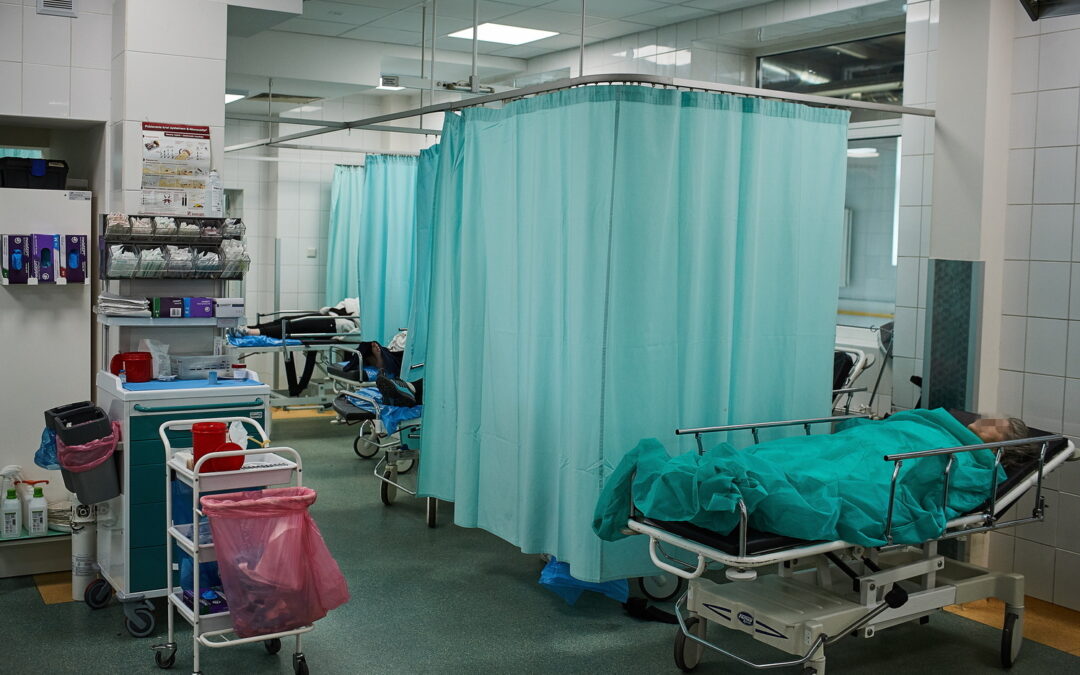Over 15,200 people died in hospital emergency departments in Poland last year, continuing a rapid rise since 2015, when the figure was 6,007. The 2020 figures came as the country’s healthcare system struggled to cope amid the pandemic, with Poland recording the EU’s highest excess death rate.
The new data were made available by the health ministry after an official enquiry by opposition senator Krzysztof Brejza. Posting the figures on social media, he argued that the “drastic increase” is a result of “disastrous preparation of the healthcare system by the government”, which came to power in 2015.
The ruling Law and Justice (PiS) party has, however, argued that it inherited an underfunded and dysfunctional system from the previous administration, (which was led by Brejza’s Civic Platform party) and notes that it has increased healthcare spending as a proportion of GDP.
Lawinowo rośnie liczba zgonów na SOR-ach:
➡️2015-19 wzrost o ponad 60% z 6 na 10 tys. zgonów
➡️2020 15 tys. zgonów na SOR-ach-skutek fatalnego przygotowania ochrony zdrowia przez rząd.
Tak w praktyce wygląda reforma ochrony zdrowia w wykonaniu #PiS. pic.twitter.com/SkqWwi3jee— Krzysztof Brejza (@KrzysztofBrejza) September 25, 2021
“The higher death numbers in 2020 were caused by the COVID-19 pandemic,” said Waldemar Kraska, the deputy health minister, quoted by Wirtualna Polska. The ministry also notes that, if a patient dies in an ambulance, in some instances it is only confirmed and recorded at the emergency department.
However, the figures obtained by Brejza show that, while emergency-department deaths did jump significantly in 2020 – by 56% – previous years had also seen a steady rise, with 6,585 deaths in 2016, 7,887 in 2017, 8,712 in 2018 and 9,767 in 2019.
Polish healthcare workers recently held a mass protest, demanding better pay and conditions as well as more state spending on healthcare (which is among the lowest in the EU). Negotiations with the government have so far not yielded a compromise. Earlier this year, nurses and midwives held a “warning strike” over the issue.
Pre-existing problems at Polish hospitals were exacerbated last year amid the coronavirus pandemic, when scheduled procedures were delayed, resources were diverted to Covid patients, and appointments with specialists were limited.
Some patients also became more reluctant to seek treatment, and were more likely to visit hospital emergency departments only when suffering serious problems. Such departments themselves struggled to cope, with various reports of ambulances being turned away from hospitals.
One consequence was a significant rise in the number of deaths, which were around 20% higher in 2020 than the recent annual average. That was, according to data by Eurostat, the highest excess death rate in the EU last year.
Brejza blames the government for lack of “preparation for the pandemic”. He claims that, “as the opposition, we have repeatedly pointed out the need for two-track preparation of hospitals so that they could take care of the COVID-19 patients but also wouldn’t exclude those with severe illnesses”.
The government notes, however, that it set up emergency Covid hospitals in all of Poland’s provinces last year. Many problems – such as Poland having the EU’s lowest number of doctors in relation to population – are longstanding.
Yet despite the government increasing health spending, a record number of doctors applied to leave Poland in the first quarter of this year. It has sought to make up some of the shortfall by making it easier for medical staff from countries such as Ukraine and Belarus to work in Poland.
Main image credit: Tomasz Stanczak / Agencja Gazeta

Agnieszka Wądołowska is deputy editor-in-chief of Notes from Poland. She is a member of the European Press Prize’s preparatory committee. She was 2022 Fellow at the Entrepreneurial Journalism Creators Program at City University of New York. In 2024, she graduated from the Advanced Leadership Programme for Top Talents at the Center for Leadership. She has previously contributed to Gazeta Wyborcza, Wysokie Obcasy and Duży Format.




















